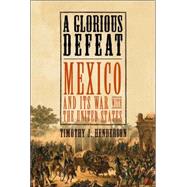
| Map | p. xi |
| Chronology | p. xiii |
| Preface | p. xvii |
| The United States and Mexico, Circa 1821 | p. 3 |
| Things Fall Apart | p. 24 |
| The Problem of Texas | p. 49 |
| Santa Anna and the Texas Revolution | p. 75 |
| The Elusive Reconquest | p. 102 |
| The Annexation Crisis | p. 133 |
| The War of 1847 | p. 157 |
| Epilogue and Conclusion | p. 179 |
| Notes | p. 193 |
| Suggestions for Further Reading | p. 199 |
| Acknowledgments | p. 205 |
| Index | p. 207 |
| Table of Contents provided by Ingram. All Rights Reserved. |
The New copy of this book will include any supplemental materials advertised. Please check the title of the book to determine if it should include any access cards, study guides, lab manuals, CDs, etc.
The Used, Rental and eBook copies of this book are not guaranteed to include any supplemental materials. Typically, only the book itself is included. This is true even if the title states it includes any access cards, study guides, lab manuals, CDs, etc.
Excerpted from A Glorious Defeat: Mexico and Its War with the United States by Timothy J. Henderson
All rights reserved by the original copyright owners. Excerpts are provided for display purposes only and may not be reproduced, reprinted or distributed without the written permission of the publisher.